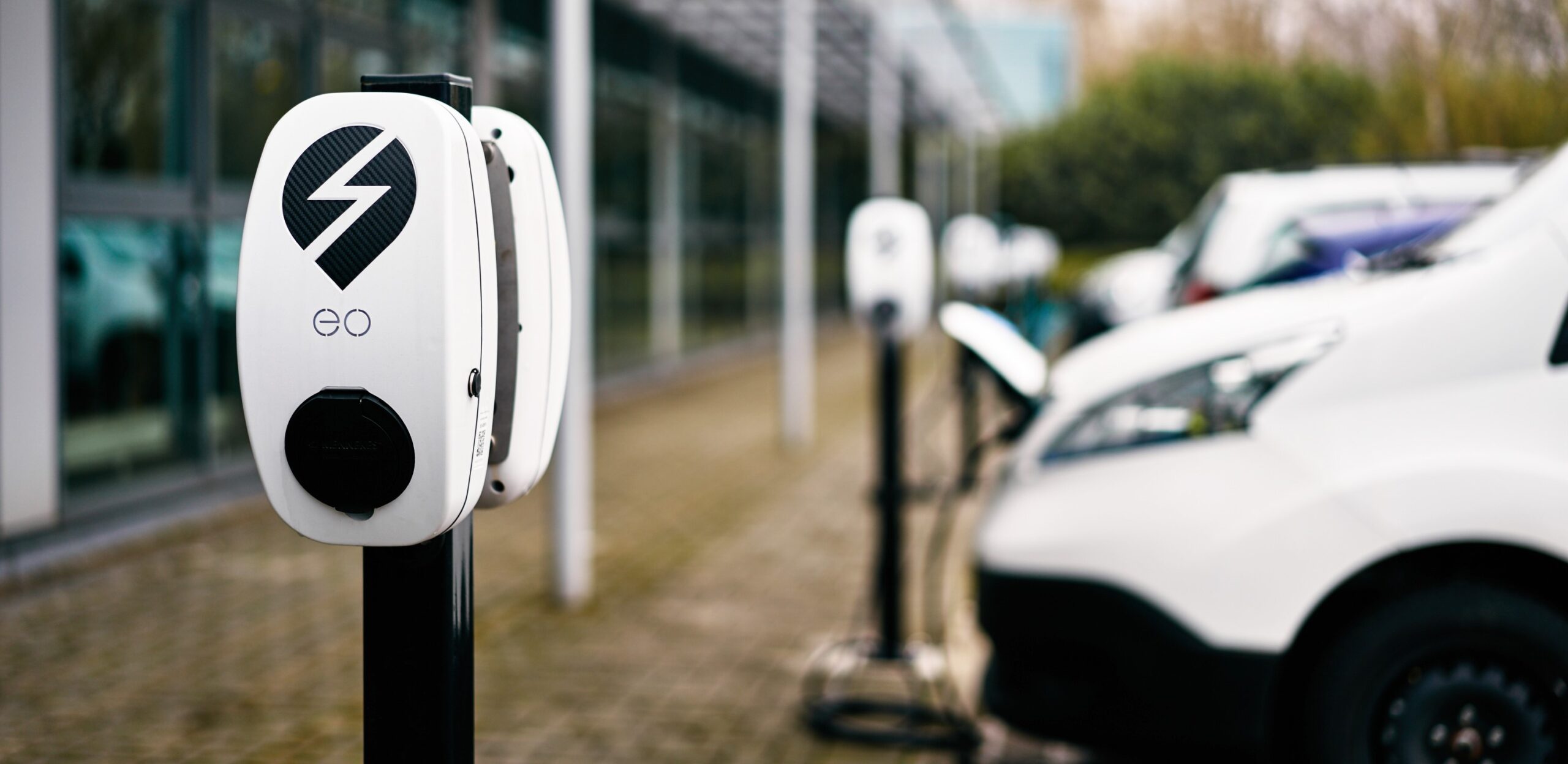Electric Vehicle Chargers Guide

As we enter into a new world of vehicle electrification, we have compiled an Electric Vehicle chargers guide, from charging at home, at the workplace or using public charging infrastructure our guide covers everything you need to know.
Home Charging
Over 90% of electric vehicle (EV) charging is done at home. There are grants in place to contribute to the cost of a home charger such as The Electric Vehicle Home charge Scheme (EVHS). This provides a £350 contribution to the cost of one charge point and its installation. The main requirement of the EVHS is that the person owns, leases or has ordered a qualifying vehicle and has dedicated off-street parking at their property.
Charging your electric vehicle at home usually happens one of two ways. Firstly, is the 3-pin plug known as slow charging, which has a maximum charge speed of 3kW per hour. A Jaguar I-pace can take up to 30 hours to fully charge from flat at 3kW per hour. Charging rates are cheaper due to the low charging power of the 3-pin plug. Advantages and disadvantages of the slow charging option are:
Advantages
- Due to lower charging power, relatively low demand on site supply and offer the ability to leave the EV charging over night
- Cost to purchase slow charging units are less than other charging options
Disadvantages
- The slowest charging option of the chargers meaning a full charge will take a long time
- Difficult to add adequate charge to EVs during trips, requiring planning of when to charge the vehicle
The other option for home charging is fast charging, which can recharge electric vehicles between 7kW-22kW an hour and this will require a charger installed at your home. A Jaguar I-pace can take up to 12 hours to fully charge from flat on a 7kW EO Mini Pro 2 charger. Charging can be slightly more expensive than the slow charger. However, you can reduce charging costs by setting up low-rate overnight tariffs through your energy supplier. Take advantage of the off-peak rates by charging through the night. Electric vehicles or charge points offer the ability to schedule your charging sessions to ensure you take advantage of the off-peak charging rates and once your EV has been fully charged the charge point will automatically turn off to avoid overcharging. One thing to look out for with off-peak charging is how much off-peak electricity your tariff will allow each day. Advantages and disadvantages of the fast-charging option are:
Advantages
- Affordable charging points installed at home making charging your electric vehicle easy and convenient.
- Charging times are faster than the -pin plug charger
Disadvantages
- Charging cost is higher on a fast charger than it is on a 3-pin plug
- From flat to a full charge can still take a number of hours
If you want to see how easy and simple an EO home charger install is, watch here.
Public Charging
An alternative to home charging is public charging. There are over 38,000 public chargers available in the UK in over 14,000 different locations. You can find public charge points at car parks, supermarkets, on the side of the road in residential areas, service stations, cinemas, pubs and restaurants. There are websites available including ZapMap which show the location of every EV charger and what type of charger is at the location. When on a long journey you may find you need to add charge to your EV. Rapid charging points are common at service stations and are one of the quickest ways to charge your EV at speeds of 50kW and above per hour. An example would be at charging speeds of 50kW per hour, a Jaguar I-pace battery would take approximately 40 minutes for 25% of charge. Although the rapid chargers are the fastest way of charging this means they are also more expensive to use and the cost to charge your EV will be higher. The chargers are also far more expensive to purchase than other chargers. Superchargers are also available on public charging with speeds up to 150kW, commonly found with Tesla’s charging network. Superchargers are the least common charger found and will have the higher charging rates.
When using public chargers, it is important to ensure the station your about to use is compatible with your car’s connection. To find this information check your EV handbook which will have the relevant information. Another thing to look out for when using public chargers are that different companies operate different charging networks meaning you may need to download an app, swipe a card or create an account to use the charger.
Charging at work
More employers are starting to offer charging access in the workplace car parks and this is because the workplace is the second likely place an employee’s EV will spend time parked. The ability to charge at work can possible double an EV driver’s all-electric daily commuting range as they can charge whilst working. Workplace charging provides a solution for those who want or have an EV but don’t have access to off-street parking and therefore struggle to acquire a charge point installed at their property.
There are grants similar to the EVHS for the workplace. The Workplace Charging Scheme (WCS) is a voucher-based scheme which provides eligible applicants with financial support towards the upfront cost of purchasing and installing EV charge points at the workplace. The financial contribution is limited to 75% of purchase and installation costs, up to a maximum of £350 per socket and up to a maximum of 40 charge points per site.
If you are interested in a home or workplace charger, click below and get in contact with the team.
Subscribe
Subscribe to our mailing list
